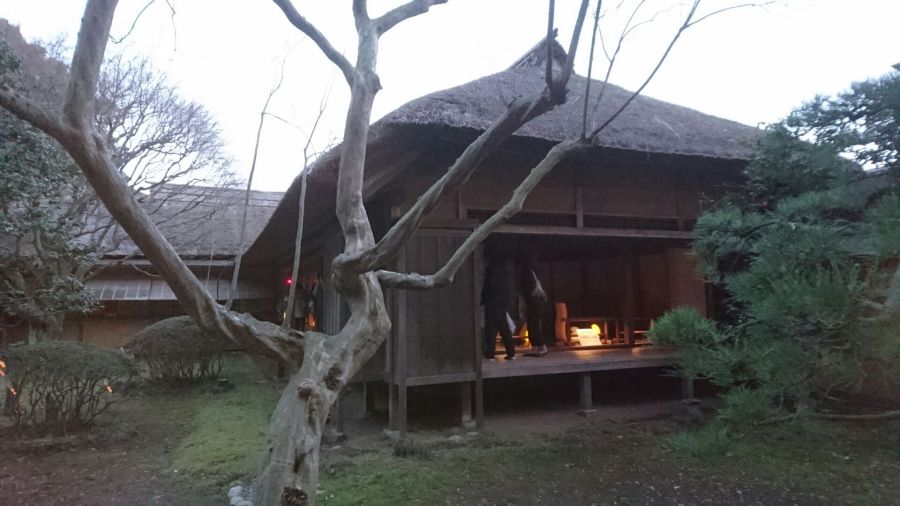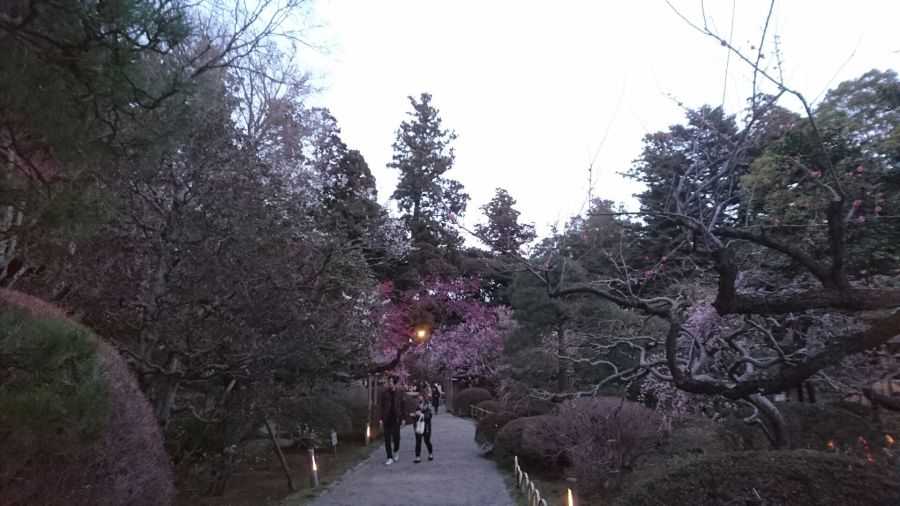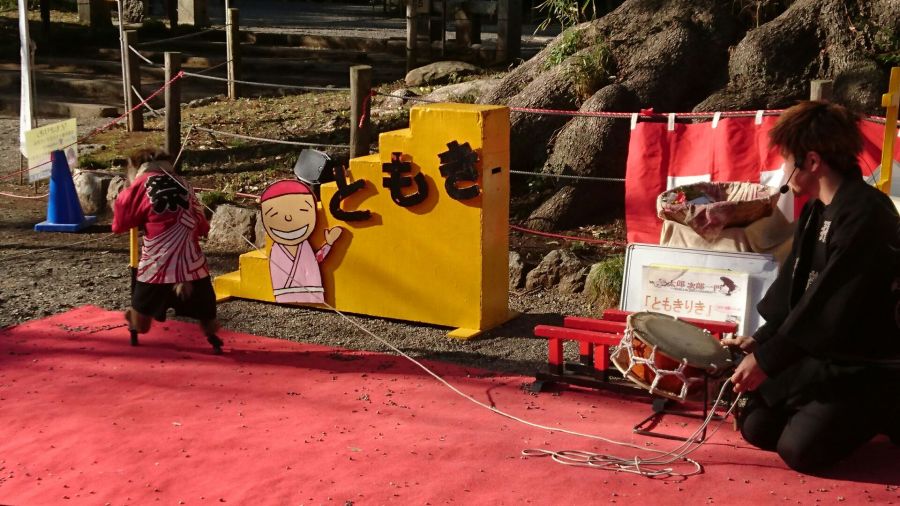
By Avi Landau
In Japan, at the heart of nearly every plan, at the core of just about any event, ceremony or excursion- there is…… EATING. No matter how solemn or raucous the ancient rite or how exquisite, refined or interesting the art, music , nature or history encountered, it is THE FOOD which is looked forward to, savored, photographed, and afterward, remembered and spoken of.
This is reflected in an old saying, which anyone interested in understanding Japanese culture should remember:
HANA YORI DANGO ( 花より団子)
which directly translated is: More than the cherry blossoms, the sweet dumplings!
This popular and commonly used expression can be taken to mean that even though we have come out to see the cherry blossoms in full bloom, it is the food that really matters! This thinking can be applied to nearly any activity in Japan.

Thus, do not be surprised if your Japanese friends have gone to see Kabuki in Tokyo, and later, instead of telling you about the play itself ( which they had most probably slept through anyway!), they excitedly describe the contents of their MAKU-NO-UCHI-BENTO, the famous lunch boxes eaten between acts.

Or if you know someone planning a trip on the SHINKANSEN ( bullet train), probably more than the views from the window, they are dreaming of sitting in the comfortable chairs, nursing a cold beer, and then opening up their EKI-BEN, the unique boxed lunches which certain stations are famous for.
I could go on and on. If you`d like some quick proof of the PROMINENCE of food in the minds of the Japanese, just head over to your local (Japanese) bookstore and have a look at any guidebook or travel magazine. You will find that they are filled mostly with detailed photos of the dishes and snacks that the traveler can enjoy. Only a few sentences are spared for the boring historical or cultural details.

Another, important aspect of Japanese culture that anyone interested in this country should be aware of, is that when someone travels somewhere, whether for business or pleasure ( but especially for pleasure) they should, as a matter of course, bring back or send OMIYAGE ( お土産). These are gifts, usually representative of the place visited, and they are given to relatives, colleagues, neighbors, etc.
Japanese entrepreneurs have developed an amazing array of these OMIYAGE, many of which have become veritable icons representing their cities. These are usually beautifully, and even extravagantly packaged, and more often than not, contain some explanation about their special relation to the places which they are connected to.
Because of this deeply ingrained custom, even those of you who never leave Tsukuba (or the town in Japan which you live), can still often get a chance to enjoy, in the form of received OMIYAGE, special delicacies and treats from every corner of Japan, and even from the far reaches of the globe.

Now I can start to get to the point! In February and March Japan`s plum trees start to bloom. Ibaraki Prefecture, in which Tsukuba (the city in which I live) is located, is famous for these trees. In fact, plum trees (UME) are the official Prefectural Tree!
The reason for this is that one of the most famous spots for enjoying plum blossoms in all of Japan is right in our prefectural capital – Mito.
The Kairaku-En Garden is ranked as one of the 3 great gardens of Japan. Most visitors are usually disappointed, however, to find that this garden actually looks not very different from an ordinary park – except for in this season, that is! About 30,000 plum trees, with blossoms of various colors, burst into bloom in February and March, in and around the garden… spectacular!.
During this period, tourists arrive by the bus load, from far and wide. Traffic around the garden is, as you can imagine, insanely congested. There is even a temporary train station which opens for this 2 month period. In this part of Japan it is THE EVENT OF THE SEASON
As I mentioned earlier, these throngs of people have not only come to enjoy the flowers. They have also come to eat the areas representative food and sweets AND to buy omiyage. Since many of my friends, neighbors, and students have made the trip to the famous garden this year, I have been lucky to get my season`s fill of two of my favorite OMIYAGE sweets – both representative of Mito:
Mito no Ume- sweet bean paste wrapped in shiso leaves which have been soaked in plum syrup !
And
Noshi Ume- translucent, amber colored strips of jelly, made of plums and brown sugar. They come sandwiched in sheets of real bamboo bark and their combination of sweet and sour sensations is refreshing.
Both of these are available at Mito`s train station, department stores and tourist spots at any time of year, but they are most commonly eaten in this season, when so many people visit that city.

Since for me the dango ( dumplings) DO NOT come before the flowers, I would like to explain a little bit more about the connection of UME to Mito.
In ancient China, the plum tree was said to be the tree of scholarship and learning. There it was said that plum trees would only blossom in the gardens of those who loved to study. In this way, UME trees were also called KOBUNKI ( 好文木), which means the trees that love learning.
The fruit of the plum trees were also believed to have medicinal powers, and in China, under-ripe plums were (and still are) smoked (as in smoked salmon), and then eaten. These have been said to be good for reducing fever, stopping a cough, purging parasites, and reducing nausea.
The plums can also be made into wine.
After being introduced to Japan more than one thousand years ago, these trees also became associated with scholars here ( especially with Sugarawa no Michizane 854-903, whose spirit was actually enshrined as a God of Learning- Tenjin), and their fruit became one of the most essential elements of Japanese food culture, especially in the form of dried-salted plums- UME BOSHI, and UME SHU- plum wine.
When Tokugawa Nariaki, the ninth Lord of Mito, planned the Kairaku-En garden ( which was completed in 1842), he had so many plum trees planted for two reasons: for food, in case of war or famine, and as a symbol of scholarship, for which his family was famous ( they compiled the history of Japan called the Dai-Nihon Shi, and created a school of thought now called as Mito-Studies).


Now having said that, I can pop another Mito no Ume into my mouth, and wash it down with a little UME SHU.
AHHH. This is the life!
Let this posting be a lesson to anyone living in Japan. Remember- giving gifts is important. If someone has given you OMIYAGE, you should probably reciprocate.
Let me finish with this story:
As an extreme example of OMIYAGE giving, let me tell you about the time I guided a group of elderly Japanese women ( in their 70`s and 80`s) to New York. At the airport on the way back home, the oldest lady in our group, bought 50 boxes (!) of overpriced (30 Dollars each) chocolate packed in boxes with a picture of Manhattan on the cover. These were for each family in her village! The total cost for these chocolates was well over what she had paid for the entire trip up to that point!
And here is one of the more interesting OMIYAGE I have recently received. This is from the town of Obama, in Fukui Prefecture. The company that produces these cookies is trying to cash in on the fact that the city`s name is spelled and pronounced in exactly the the same way as the name of the much missed former American president. ( and by the way, a visit to Obama in Fukui is well worth it, for its old temples and shrines!)





I went to Kairaku-en this week and happily discovered that they are illuminating the best trees until 9 pm (and its all very tastefully done!). This will apparently continue through the 21st. That means you could drive there and arrive in the evening, as the crowds are thinning out, find a parking space in the adjacent lot, and then stay for as long as you like. Dress warmly – take gloves.
LikeLike
Mito no Ume sweets are available at several locations in Tsukuba and Tsuchiura. At Tsukuba Station (at the family Mart Kiosk) near the ticket gates, at Tsukuba Center at Tonarie (upstairs) at the Keisei Department Store corner, at Iias Tsukuba near the Misterdonuts at the entrance to the Kasumi Supermarket, and at the Tsuchiura Aeon Mall’s Ibaraki Prefecture Products corner
LikeLike